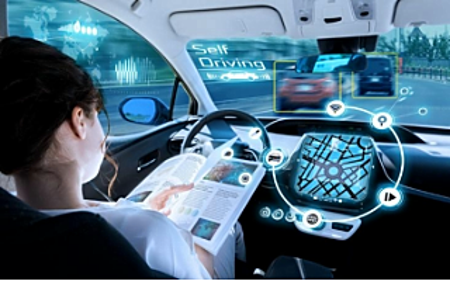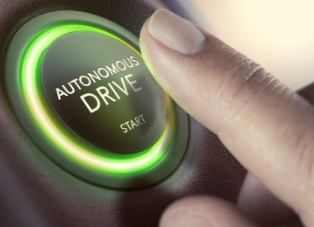August 27, 2018 – Jackie Roberson is a content contributor to the website Seek Visibility. She writes about technology, home life, and education. In this her first contribution to 21stcentech.com she is tackling the elephant in the room when it comes to the inevitable arrival of autonomous vehicles and our dependence upon them. The what if question, an autonomous vehicle going rogue because the onboard computer system gets hacked, is her focus. I hope you find her contribution interesting and look forward to your comments.
Driverless cars are coming soon — but not that soon because developers still need to work out some of the kinks in the technology. Autonomous vehicles have problems. They struggle to cope with construction work, potholes, unmarked country roads, snow, and icy road surfaces just to name a few challenges. [If you read yesterday’s posting on autonomous vehicles and ground penetrating radar, most of what Roberson describes should be addressed by a $100 US technology produced by WaveSense.]
A bigger outstanding concern is that autonomous vehicles are controlled by computers, and we all know that where there are computers there are hackers. A hacker could turn a car ride into a nightmare whether you are using an autonomous car service from Uber or Lyft, or your own vehicle. One minute you’re gliding down the road, listening to a podcast, texting friends or dozing after a long day at work, and in the next moment, your car destination changes. Your doors and windows lock. A message from the hacker appears on the LED display to inform you are being held hostage. An even more frightening scenario is one depicted in spy novels. Your autonomous ride starts careening over the median on the highway or stalls out on a train track.
Developers of self-driving vehicles are aware of these threats and are working to make sure riders never get placed in these situations. Separating reality from fiction means defining the threat in real terms.
What’s Real?
The threat hackers pose is certainly real. Just ask Wired journalist, Andy Greenberg, who in 2015 took part in an experiment in which the car controls of a Jeep he was driving were taken over by hackers. Security researchers Charlie Miller and Chris Valasek were able to control the Jeep’s steering, brakes, keyboard functions and transmission remotely through the Internet. They could kill the vehicle’s engine and send it off the road with Greenberg sitting behind the wheel.
The demonstration caused a massive recall of more than one million of Fiat Chrysler vehicles, as the manufacturer scrambled to patch security issues with its vehicle software. And that happened in a driver-controlled car where a human behind the steering wheel could intervene by pushing on the brakes or trying to regain directional control. Now imagine the same happening in an autonomous vehicle. Things related to security get far more complicated.
If you are a recent buyer of a new vehicle the chances are it is all ready packed with semi-autonomous features. It may sense obstacles and brake automatically if you don’t press the brake pedal yourself. Some cars even park themselves. With a steering wheel and brakes, if something goes wrong with these features, you can still gain control. But in an autonomous vehicle without a brake pedal or steering wheel, you can’t do that. You might not even be in the front seat. Without manual controls, you are very much at the mercy of the vehicle’s autonomous computer controls.
Simple Cars Are Safe Cars
Vulnerability to hacks is not limited to controlling brakes and steering. Increasingly, vehicles come with high-tech bells and whistles like Bluetooth or digital touch-screen displays that are equally vulnerable. Bluetooth, onboard Wi-Fi, OnStar cellular radio and dashboard display web browsers represent points of entry where hackers can take control.
As the auto industry moves away from the model of individual ownership and closer to a car sharing alternative where users order rides as needed, Miller and Vasalek predict vehicles will need to pare down fancy digital features for security reasons.
The driverless cars of the future may not have radios, Bluetooth, or touch-screen displays hard-wired into the dashboard. Riders probably won’t miss them. Most will use personal devices for listening, and reading. The need for hands-free calling will go the way of the Dodo when passengers no longer have to control a steering wheel. Riders will use a locked-down, bare-bones tablet to interact with an autonomous vehicle with the retention of some traditional manual controls or other means of performing a manual override in case hackers try to take control remotely.
In the U.K., lawmakers are already seeking to criminalize the hacking of autonomous vehicles and are making attempts to ensure that humans remain responsible for road accidents, even if it not responsible for piloting the vehicles involved.
Ultimately driverless vehicles are expected to save millions of lives by making road travel safer. That includes safe from those who would exploit their software controls. For this reason manufacturers and developers of autonomous software are working hard to make the technology as hacker-proof as possible.










